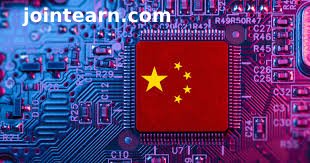Chinese legacy chipmakers and silicon producers are making a powerful impact on the global semiconductor market, putting Western companies under immense pressure with their aggressive pricing strategies and increasing production capacity. Industry experts are forecasting a potential “China shock” in chipmaking, and some companies are already feeling the competitive squeeze.
Mature Process Nodes Drive the Global Chip Industry
Mature process nodes, typically those above 20nm, are crucial for chip manufacturers outside of cutting-edge technology. These legacy nodes are essential in powering a wide range of consumer electronics and automotive applications, with production of these older chips and silicon wafers providing substantial revenue streams to fund R&D and innovation in the semiconductor industry.
China’s Growing Dominance in Legacy Chip Manufacturing
By 2025, the pressure to compete with Chinese semiconductor firms will intensify as Chinese fabs aggressively undercut prices on legacy chips. Due to U.S. sanctions restricting China’s access to modern process nodes and advanced manufacturing tools, China has rapidly shifted focus to the production of legacy chips to meet domestic demand. By the end of 2025, Chinese fabs are projected to account for 28% of global mature chip capacity.
A sales director from a prominent German chipmaker shared insights with Nikkei Asia, revealing a dramatic price drop in silicon carbide (SiC) wafers. “Just two years ago, a mainstream 6-inch SiC wafer from Wolfspeed was priced at $1,500,” he explained. “Today, the same wafer is sold for $500 by Guangzhou Summit Crystal Semiconductor.” Other Chinese fabs are also offering similar undercut pricing, contributing to what the sales director describes as a “bloody knockout match” in the industry.
The Impact on Western Companies
Wolfspeed, once the global leader in silicon wafer production, has faced significant setbacks, including a 96% drop in stock value over the past three years and a 20% staff reduction. Similarly, Onsemi, a U.S.-based semiconductor company, recently laid off 9% of its workforce. While these challenges aren’t solely attributed to China’s rise in legacy chip production, the U.S. government has acknowledged that the rapid expansion of Chinese chip manufacturing could significantly disrupt the American semiconductor market.
Government Support Fuels China’s Semiconductor Growth
China’s semiconductor sector has benefited from substantial government support, both at the national and local levels. The Chinese government’s “Big Fund” has raised ¥688 billion (approximately $95 billion) in three rounds to invest in semiconductor production, with local governments backing regional semiconductor champions. This extensive support has fostered the emergence of numerous new players in the market, further challenging Western competitors.
Oversupply Risks and Increased Market Share
While China’s expansion in legacy chip production is undeniable, experts warn that the rapid growth of the sector may lead to oversupply. China’s market share of mature node chips is expected to rise from 28% in 2025 to 39% by 2027. IDC analyst Galen Zeng points out that several types of mature chips are already experiencing oversupply. Additionally, the slow recovery of China’s economy could impact demand, despite the country’s aggressive push for localization in the chip sector.
The U.S.-China “Chip War” and Its Impact on the Global Market
China’s aggressive expansion into legacy chip production has begun, as predicted when the country first announced its ramp-up in 2023. This new chapter in the U.S.-China “Chip War” is set to reshape the semiconductor industry, with both countries vying for dominance in the global market. As profit margins continue to shrink in the wake of intense price competition, the future of legacy chip manufacturing remains uncertain for both Western and Chinese companies










